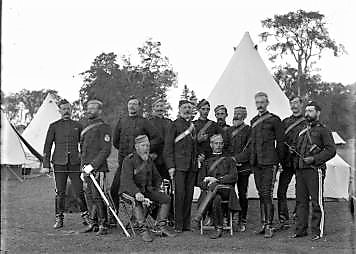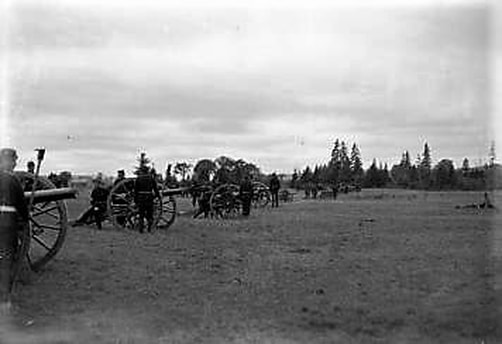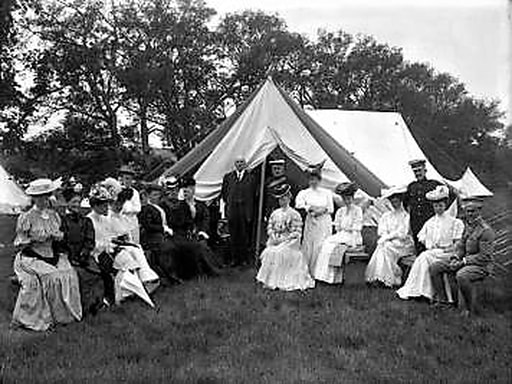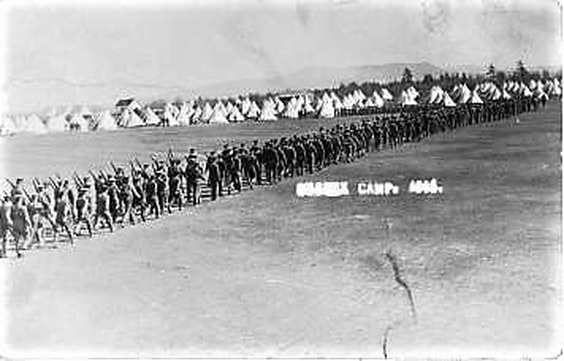
In the years leading up to the First World War, militia training would reach its zenith at Camp Sussex. This is despite the fact that a soldier’s pay was often negligible. For example, a soldier in the 74th Battalion could receive anywhere from 0.50 to 0.85 cents per day in 1907. The 8th Hussars used a comparable pay structure. However, the Hussars could receive an extra $1.50 as the Government would rent their horses. Notwithstanding the low wages, many militia regiments would train in Camp Sussex leading up to the First World War. Annual militia training was a key component of Dominion defense; as such, the militia regiments were mobilized annually to take part in 1 to 2 weeks of training in the summer. This annual training did not preclude the regiment’s from conducting their own training camps throughout the year. In Military District No. 7, New Brunswick, this annual training often saw over 1000 men gathered in Camp Sussex to perform drills, practice their shooting, and go on parade.
As the First World War approached its final year, the Canadian Government placed an emphasis on recruiting more soldiers. In response, the 1st Mobilization Depot Battalion was raised and headquartered at Camp Sussex in April of 1918. Their task was to increase the number of recruits training to replace those men lost at the front. Overseeing the Battalion was Lieutenant-Colonel James McAvity. However, the establishment of the Depot Battalion would be the last great development at Camp Sussex for the next two decades.


